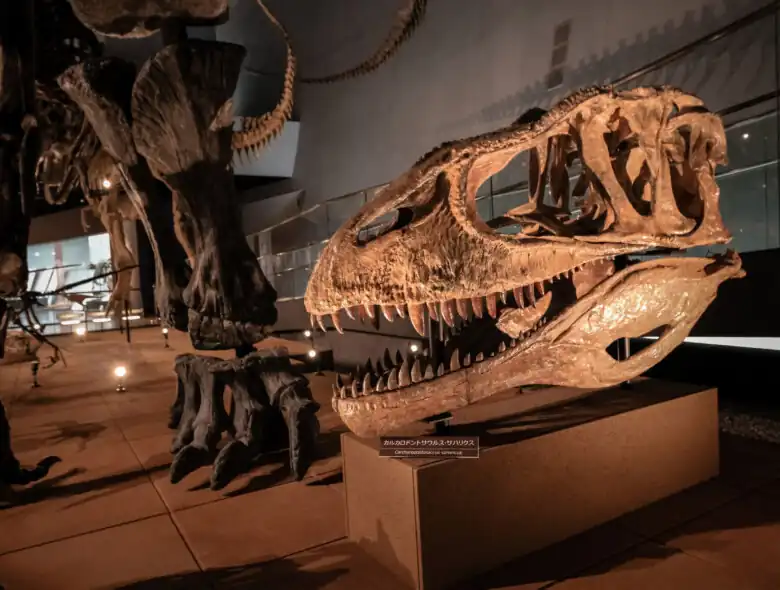Located on the Sea of Japan coast, Fukui Prefecture is part of the historic Hokuriku region of Japan and presides in the Chubu region of Honshu. Its capital city is Fukui City with other major cities being Sakai, Echizen, and Sabae.
Fukui arguably remains one of Japan’s hidden travel destination gems, with not many tourists, both local and international, even so much as glancing in its direction on the map when it comes to planning a trip. However, that’s what makes the prefecture a must-see travel destination, especially for history buffs and dinosaur lovers.
Fukui is home to one of the 12 remaining original castles in Japan, is in possession of ruins from the Sengoku Period over half a century ago, and is the site of many paleontological finds. In this article, we’ll explore 5 attractions in Fukui that showcase why this slightly unknown, sleepy, rural prefecture has more to offer than people perhaps realize. And after, if you realize that the high-energy, fast-paced city life isn’t really doing it for you, but the slower, more tranquil pace of a prefecture like Fukui sounds like an attractive alternative, check out Village House for rental accommodation options. Village House is a real estate agency organization with over 1,000 properties across Japan’s 47 prefectures that specializes in low upfront apartment costs (no deposit*, renewal fees, key money, or handling fees!)
*A deposit may be required depending on contract details.
Fukui Prefectural Dinosaur Museum

Fukui is home to one of the leading paleontology museums in Asia and is renowned for its fascinating exhibits of dinosaur fossil specimens and ongoing paleontological research. Located in Katsuyama, about an hour’s train ride from Fukui City’s Fukui Station, the dinosaur museum can be found in Nagaoyama Park, also known as Katsuyama Dinosaur Forest Park.
As of 2009, the entire area of Katsuyama City has been recognized as a Japanese Geopark and the Field Station is the largest Dinosaur Discovery Site in Japan with many dinosaur fossils having been discovered there, including 5 new species of dinosaurs.
When visitors visit the museum, they also have the opportunity to visit the three areas of the Field Station to learn about the excavation of dinosaur fossils through a 2-hours tour that provides hands-on experience for participants.
The dinosaur museum itself features 3 main exhibits:
- Dinosaur World where visitors can learn about dinosaurs of Japan and Asia and stare in wonder at the 50 dinosaur skeleton displays, many of which contain original fossils
- Earth Sciences where visitors learn about the rocks and minerals that are essential components of the Earth
- History of Life where visitors learn about the origin of life to the advent of humanity
The dinosaur museum is open from 9:00am to 5:00pm and is closed every 2nd and 4th Wednesday. Tickets cost 1,000 yen for adults, 800 yen for high school and university students, and 500 yen for primary and secondary school students. More information on the museum and Field Station tour can be found on the museum’s official website.
Getting to the museum requires some careful time management as public transportation does not run as frequently as in big cities like Tokyo and Osaka. From JR Fukui Station, take the train to Katsuyama Station on the Echizen Railway Eiheiji Katsuyama Line. The journey takes about an hour. Upon arrival at Katsuyama Station, you have the option of taking a 10-minute taxi ride or trying your luck with the very infrequent local community bus.
Daihonzan Eiheiji
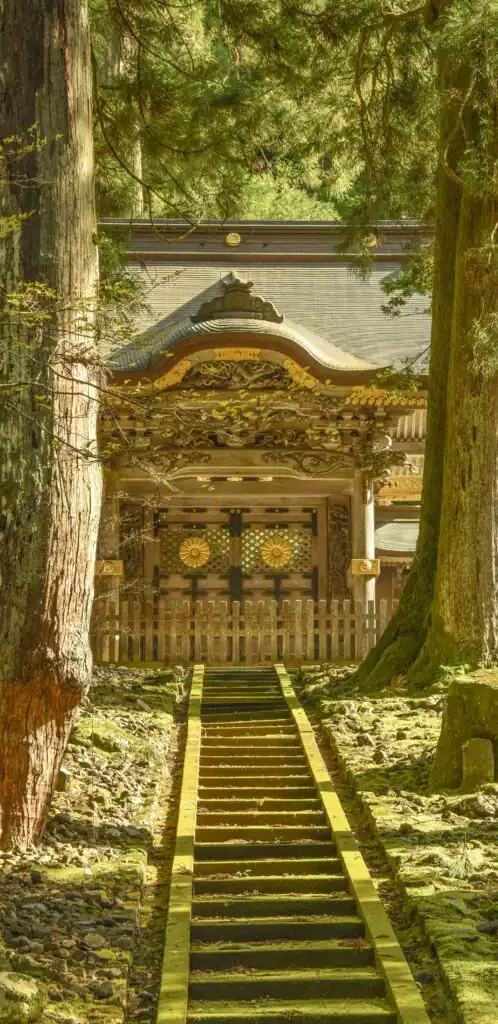
Daihonzan Eiheiji Temple is a large temple complex and active monastery that sits regally on a cedar and moss-covered slope in the mountains outside of Fukui City. The temple is one of two Soto Zen temples in Japan, the other being in Tsurumi, Yokohama.
The name, “Eiheiji” roughly translates to, “The Temple of Eternal Peace” and was named so by Zen Master Dogen who founded the temple in 1244. Dogen was a Buddhist scholar who introduced Soto Zen from China to Japan in 1228 and named the temple as such because he believed that eternal peace could be achieved wherever one practiced it.
The temple, which boasts seven and a half centuries of tradition, is comprised of over 70 buildings, all of which are connected by covered walkways to protect its residents from the bitter cold and heavy snowfall during winter. Over 200 priests-in-training currently reside and work in this temple.
Visitors to the temple enter through the reception hall known in Japanese as Kichijokaku, where a short orientation about the temple and its history in Japanese will be given. Non-Japanese visitors can pick up a foreign language pamphlet to learn more about the temple’s history and buildings.
Daihonzan Eiheiji is located in a town 10 kilometers from the city of Fukui and is about a 6-hour train ride from Tokyo or a 4-hour train ride from Osaka. There is a direct bus from Fukui Railway Station, which takes around half an hour and costs, at the time of writing, 750 yen one way. Admission to the temple is 700 yen for adults and 300 yen for elementary and junior high school students, and the temple’s opening hours are from 8:30am to 4:30pm. More information can be found on its official website.
Maruoka Castle
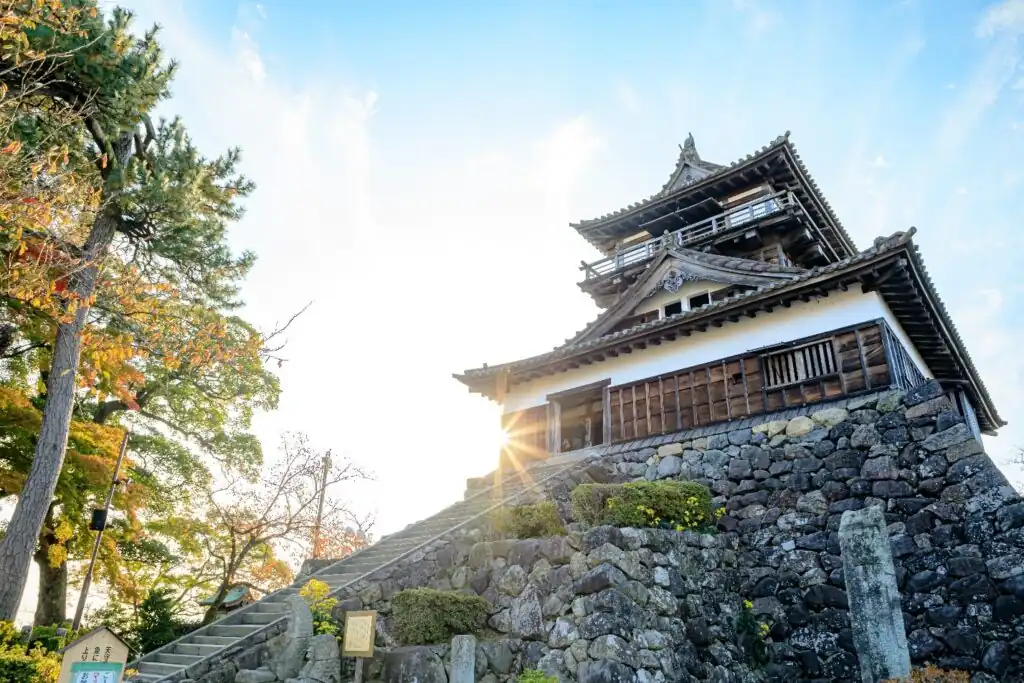
Maruoka Castle is a Hirayama-style Japanese castle situated in the Maruoka neighborhood of the city of Sakai. It’s also affectionately known as Kasumi-ganjo or “Mist Castle” due to the legend that whenever an enemy approached, a thick mist would waft in to hide the castle.
Built at the end of the Sengoku Period, Maruoka Castle is one of the 12 original remaining castles in Japan that has survived with their castle keeps (donjon) intact. The castle has 3-storeys with a tower base stone wall that is roughly 6.2 meters high. Visitors to the castle are welcome to visit the different floors if they can brave the extremely steep wooden stairs that sit at a 67-degree angle. This is a rare design for castle stairs, even in Japan. Ropes hanging from the ceiling can be used to help scale these tricky stairs.
To get to Maruoka Castle, visitors can take a bus from Maruoka Station, and the journey takes approximately 30 minutes. Admission is 450 yen for adults and 150 yen for children and operating hours are from 8:30am to 5:00pm.
The nearby teahouse, Ippitsu Keijou Teahouse provides facilities such as a rest area, luggage storage, coin lockers, wheelchair rentals, and a gift shop. More information can be found here.
Echizen Daibutsu

Translated into English as “Echizen Great Buddha”, this is Japan’s biggest Buddha statue residing under a roof. Standing an impressive 17 meters tall, the statue was named after Echizen Province, the old name for Fukui Prefecture, and sits in Daishizan Seidaiji Temple in Katsuyama City, which is near the dinosaur museum if you want to make the most of your day in this area.
The temple was built in 1987 by the owner of a local taxi company and aside from the gargantuan Buddha statue, which is modeled after the seated Buddha statue in the Longmen Grottoes of Luoyang, China, there are almost 1,300 other statues of various sizes on display.
Another highlight of visiting this temple and Buddha statue is a five-story pagoda that stands 75 meters tall and is the tallest of its kind in Japan.
Lastly, there is a replica of the Wall of Nine Dragons from China that visitors can experience.
Admission to the temple costs 500 yen for adults and 300 yen for children. Opening hours are from 8:00am to 5:00pm in the summer and 9:00am to 4:00pm in winter.
To get to Echizen Daibutsu, take the train on the Echizen Railway Katsuyama Eiheiji Line to Katsuyama Station from JR Fukui Station. Upon arrival, you have the option of a 5-minute taxi ride which costs around 1,500 yen, or a 20-minute ride on the infrequent community bus, which costs 100 yen but comes every 3 to 4 hours. Alternatively, from JR Fukui Station, East Exit, there is a “Hapi Bus” that will take you to the temple.
Yokokan Garden
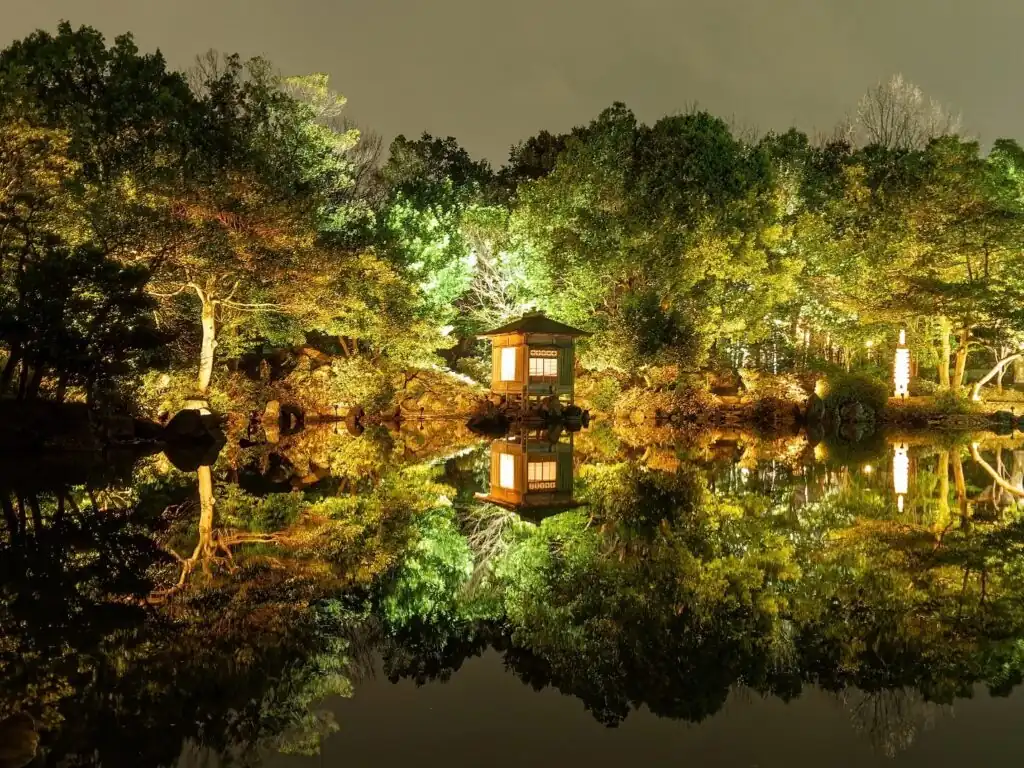
Yokokan Garden is a landscape garden in central Fukui City that features a pond and a sukiya-style villa, which is a type of traditional Japanese tearoom. The villa was built to look like it was floating in the pond.
The garden is a few hundred meters from the former site of Fukui Castle’s inner ward and was used as a place of enjoyment, relaxation, and hosting banquets and tea ceremonies for the Matsudairas, the formal feudal family of the Fukui Domain who ruled Echizen Province during the Edo Period of 1603 to 1868.
The garden is easily accessible via a 15-minute walk from JR Fukui Station in Fukui City. Opening hours are 9:00am to 7:00pm though the garden closes at 17:00 from November 6th to the end of February (winter operating hours).
Admission for general entry costs 220 yen but it is recommended to purchase the 350 yen ticket which grants visitors access to both the garden and the Fukui City History Museum. More information on the garden can be found on its official website.
Related articles:
- Top 5 Recommended Travel Destinations in Japan in June
- Your Guide to Fukui Prefecture Part 2: Even More Must-See Destinations
- Shimane Prefecture: A Journey Through History, Spirituality, and Scenic Beauty
- 5 Underrated Destinations in the Tohoku Region
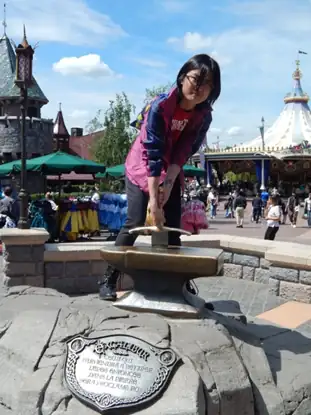
Freelance writer with over 2 years of experience writing for the Village House Blog, ESL teacher, and digital nomad who has lived in countries including The Czech Republic, The UK, The U.A.E., Japan, and most recently, Georgia. Is constantly on the hunt for the best, most optimal apartment for remote work when not enjoying going to film festivals, concerts, and the theater.


